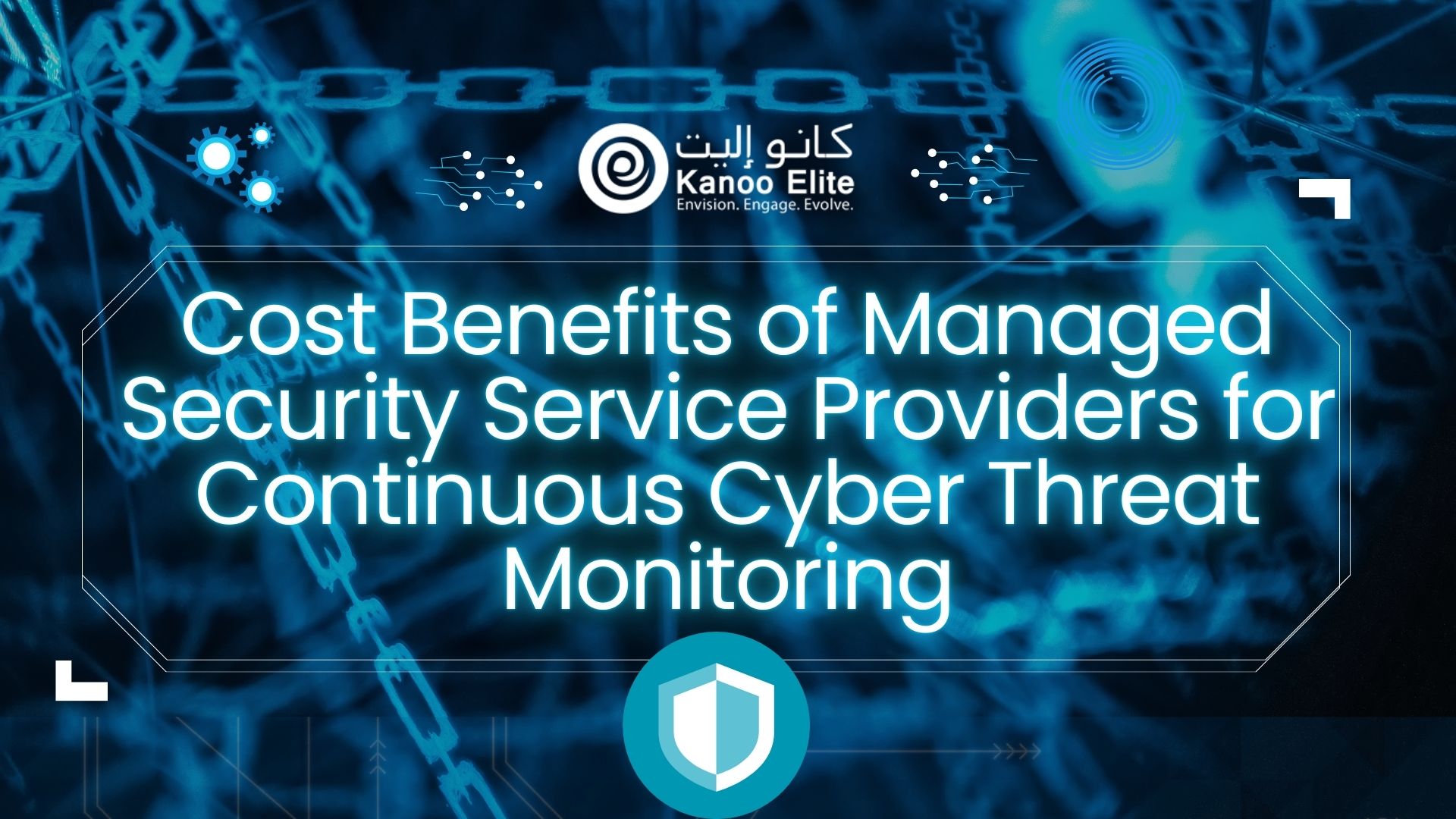In today’s hyper-connected digital landscape, cyber threats are no longer occasional incidents—they’re a continuous, evolving challenge. Businesses of all sizes face a constant barrage of phishing attacks, ransomware campaigns, insider threats, and sophisticated nation-state hacking attempts. The need for continuous cyber threat monitoring has shifted from a “nice-to-have” to an absolute necessity.
However, maintaining an in-house team to provide 24/7 monitoring can be expensive, resource-intensive, and difficult to scale. This is where Managed Security Service Providers (MSSPs) come into play. By outsourcing cyber threat monitoring to an MSSP, organizations gain access to specialized expertise, advanced tools, and round-the-clock vigilance—often at a fraction of the cost of building and maintaining these capabilities internally.
In this article, we’ll explore the cost benefits of MSSPs in delivering continuous cyber threat monitoring and why this approach is increasingly becoming the preferred choice for cost-conscious yet security-focused businesses.
1. Eliminating the High Capital Costs of Building an In-House SOC
To monitor cyber threats 24/7, organizations often set up a Security Operations Center (SOC)—a centralized facility where security teams analyze, detect, and respond to cyber incidents in real time. While effective, SOCs are expensive to build and maintain.
Typical costs include:
- Infrastructure investments: Servers, monitoring tools, threat intelligence feeds, and SIEM (Security Information and Event Management) platforms.
- Staffing: Hiring skilled cybersecurity analysts, engineers, and incident responders for 24/7 shifts.
- Training: Ongoing upskilling to keep pace with evolving threats and new compliance requirements.
Setting up even a modest SOC can cost millions of dollars annually, making it unrealistic for small to mid-sized businesses.
Cost benefit of MSSPs:
MSSPs operate a shared SOC model, spreading infrastructure and staffing costs across multiple clients. Instead of bearing the full burden, your organization pays a predictable monthly or annual subscription fee. You gain access to a fully functional SOC without any capital expenditure.
2. Reducing Staffing Costs and Addressing the Talent Shortage
Cybersecurity talent is in high demand and short supply. According to industry reports, there’s a global shortage of over 3 million cybersecurity professionals. Recruiting and retaining top-tier security talent is both difficult and expensive.
Challenges of in-house staffing:
- Salaries for experienced analysts can range from $80,000 to $150,000 annually.
- Round-the-clock coverage requires multiple shifts, multiplying staffing costs.
- Burnout is high in the cybersecurity field, leading to turnover and repeated recruitment costs.
Cost benefit of MSSPs:
MSSPs already employ a team of seasoned analysts, engineers, and incident responders. By outsourcing, you:
- Avoid the expenses of recruiting, training, and retaining staff.
- Access specialized skills instantly, without long hiring cycles.
- Pay for expertise only when you need it, rather than maintaining a full-time internal team.
3. Leveraging Advanced Security Tools Without Extra Licensing Costs
Effective threat monitoring requires cutting-edge tools—from endpoint detection and response (EDR) systems to advanced threat intelligence platforms. Purchasing, deploying, and managing these tools independently can be a financial strain.
Cost factors for in-house tools:
- High upfront licensing fees.
- Ongoing subscription renewals.
- Maintenance, upgrades, and integration with existing systems.
Cost benefit of MSSPs:
MSSPs include these tools as part of their service offering. Instead of investing heavily in licenses, your subscription grants you access to:
- Industry-leading SIEM and EDR solutions.
- Automated threat detection and AI-driven analysis.
- Regularly updated threat intelligence feeds.
You’re essentially renting world-class capabilities at a fraction of the purchase cost.
4. Avoiding the Financial Impact of Downtime and Breaches
When it comes to cyber threats, the true cost isn’t just in prevention—it’s in what happens if you fail to respond quickly. A successful cyberattack can lead to:
- Extended downtime.
- Lost revenue.
- Reputational damage.
- Regulatory fines.
According to IBM’s Cost of a Data Breach Report 2024, the average global cost of a data breach is $4.45 million, with costs even higher in industries like healthcare and finance.
Cost benefit of MSSPs:
MSSPs provide continuous monitoring, which drastically reduces the time to detect and respond to threats—known as Mean Time to Detect (MTTD) and Mean Time to Respond (MTTR). Faster response means:
- Less damage from attacks.
- Shorter downtime.
- Lower recovery costs.
By preventing just one major incident, the MSSP service can effectively pay for itself many times over.
5. Scaling Security Operations Without Scaling Costs
As businesses grow—expanding to new locations, launching new applications, or adopting cloud services—security needs also grow. Scaling an in-house SOC means:
- Hiring more staff.
- Buying additional tools.
- Expanding infrastructure.
Cost benefit of MSSPs:
MSSPs operate on a scalable service model. Whether you add 50 employees or open offices across continents, your MSSP can adapt quickly without requiring you to invest in proportional infrastructure or headcount. You pay for the coverage you need, when you need it.
6. Simplifying Compliance and Avoiding Penalties
Compliance with industry regulations like GDPR, HIPAA, PCI DSS, and ISO 27001 is not just about avoiding fines—it’s about protecting sensitive data and maintaining customer trust. However, compliance audits can be time-consuming and costly if you’re not continuously monitoring security.
Cost benefit of MSSPs:
MSSPs help maintain continuous compliance by:
- Logging and retaining security events for audit purposes.
- Providing reports that meet regulatory standards.
- Monitoring for violations in real time to prevent costly breaches.
By outsourcing compliance-related monitoring, you reduce the cost and complexity of audits and minimize the risk of fines.
7. Converting Fixed Costs into Predictable Operating Expenses
In-house security investments often require significant capital expenditures (CapEx) for hardware, software, and staffing. These costs can spike unpredictably during incidents or upgrades.
Cost benefit of MSSPs:
MSSPs convert security into an operational expense (OpEx) model:
- Predictable monthly or annual fees.
- No surprise costs for tool upgrades or staff overtime.
- Easier budgeting and financial planning.
This predictability is especially valuable for small and mid-sized businesses working with tight budgets.
8. Gaining 24/7 Global Coverage at a Fraction of the Cost
Cyber threats don’t respect business hours. A ransomware attack can strike at midnight, and a phishing campaign can hit during a holiday. Maintaining 24/7 in-house monitoring is costly and logistically complex.
Cost benefit of MSSPs:
MSSPs operate globally dispersed teams, ensuring round-the-clock coverage. You benefit from:
- Continuous monitoring during nights, weekends, and holidays.
- Immediate escalation protocols when threats are detected.
- Peace of mind knowing that experts are always watching.
Conclusion
The cost of cyber threats is steadily rising, while the resources required to defend against them are becoming more expensive and harder to obtain. Managed Security Service Providers offer a practical, cost-effective alternative by delivering continuous cyber threat monitoring without the heavy capital investment, staffing challenges, and tool acquisition costs of an in-house SOC.
The real financial advantage comes not just from saving money, but from avoiding losses—whether through preventing breaches, minimizing downtime, or ensuring compliance. For many organizations, the decision to partner with an MSSP is no longer about whether they can afford it, but whether they can afford not to.



